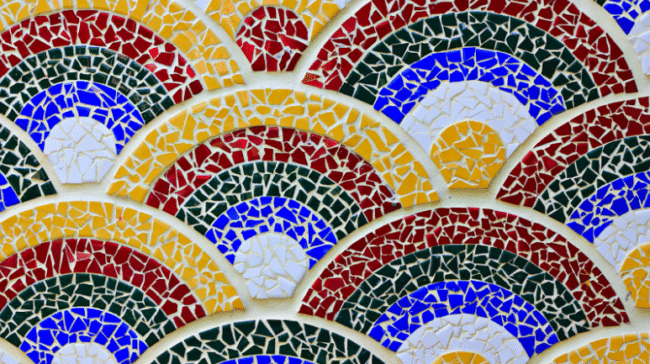
Looking to turn an everyday surface into something unforgettable? Decorative mosaic tiles might be exactly what your space needs. Whether you’re planning a kitchen update or dreaming of a bathroom makeover, mosaic tiles offer endless ways to add color, texture, and style.
These small but mighty tiles can completely change how a room looks and feels, without a full remodel. From timeless patterns to bold modern designs, mosaics let your creativity lead the way. In this guide, we’ll explore the art behind mosaic tile, the materials, patterns, and smart ways to bring their beauty into your home.
The Rich History Behind Mosaic Tile Art
Mosaic tile art dates back thousands of years, with some of the earliest examples found in Mesopotamia around 3000 BCE. These intricate designs have adorned everything from humble dwellings to grand palaces across civilizations.
Ancient Origins and Evolution
The Greeks and Romans elevated mosaic tile art to an extraordinary level of sophistication, using tiny pieces called tesserae to create detailed scenes of mythology and everyday life.
These masterpieces were typically created with natural stones like marble and limestone, with artists meticulously placing each piece by hand. The tradition continued through Byzantine times, with religious mosaics adorning churches and cathedrals throughout Europe.
Modern Renaissance of Mosaic Artistry
Today’s decorative mosaic tile reflects both ancient influences and contemporary innovation. Modern manufacturing techniques have made mosaics more accessible to homeowners, while digital design tools allow for unprecedented precision in creating custom patterns. Yet many artisans still practice traditional hand-cutting methods, preserving the authentic character that has made mosaics timeless across centuries.
The enduring appeal of mosaics lies in their ability to transform ordinary surfaces into extraordinary works of art that can last for generations. Let’s explore the building blocks that make these magical transformations possible.
Captivating Materials: Building Blocks of Mosaic Magic
The materials used in mosaic tile designs profoundly influence their appearance, durability, and application possibilities. Understanding each option helps you select the perfect medium for your project.
Glass Mosaic Brilliance
Glass mosaics capture and reflect light in ways that other materials simply cannot. Their luminous quality brings depth and dimension to any space, making them particularly effective in rooms with limited natural light. Available in countless colors from subtle pastels to vibrant jewel tones, glass tiles can create effects ranging from subtle shimmer to dramatic visual impact.
Natural Stone Mosaic Elegance
Stone mosaics connect us to the earth with their organic variations and natural beauty. Marble, travertine, and slate offer unique characteristics that cannot be replicated artificially. The subtle color variations within each stone create depth and interest, while their textural qualities add tactile dimension to your designs.
Ceramic and Porcelain Versatility
For budget-friendly options with nearly unlimited color possibilities, ceramic and porcelain tiles are unmatched. Modern manufacturing techniques can create ceramic tiles that convincingly mimic more expensive materials while offering superior durability and ease of maintenance.
With these remarkable materials at your disposal, you’re ready to explore the signature patterns that have made mosaic tile designs beloved throughout history and into the present day.
Signature Mosaic Tile Patterns That Transform Spaces
Mosaic tile patterns range from mathematically precise geometrics to flowing organic designs, each creating distinctive visual effects and emotional responses in a space.
Geometric Precision
Geometric patterns bring order and structure to mosaic installations. The classic herringbone arrangement creates dynamic movement and visual interest, while hexagons offer a contemporary look that feels both modern and timeless. Chevron patterns direct the eye and can make spaces appear larger through their strong directional lines.
Organic and Flowing Designs
Nature-inspired patterns bring a sense of calm and connection to the natural world. Botanical motifs, wave patterns, and abstract organic forms create a sense of movement and life. Gradient effects, where colors smoothly transition from light to dark, add subtle depth and can make even small spaces feel more expansive.
Cultural and Traditional Patterns
Many cultures have developed distinctive mosaic tile patterns that tell stories about their heritage. Mediterranean and Moroccan designs feature intricate geometrics in vibrant blues and whites, while Asian-inspired mosaics often incorporate natural elements like bamboo and cherry blossoms.
These culturally-rich designs allow you to infuse your space with global influences.
Understanding these pattern possibilities prepares you to make informed decisions about how to use mosaic tiles in your home. Let’s explore the practical aspects of bringing these beautiful designs into your everyday spaces.
How to Use Mosaic Tiles in Your Home
Knowing how to use mosaic tiles effectively means understanding which applications will showcase their beauty while providing practical benefits. Here are some strategic ways to incorporate these versatile elements.
Kitchen Applications Beyond Backsplashes
While backsplashes remain the most popular kitchen application for mosaics, thinking beyond this limited area opens up exciting possibilities. Consider creating a feature wall behind open shelving, adding mosaic accents to a kitchen island, or even incorporating small mosaic details into countertops for unexpected visual interest.
Bathroom Transformations
Bathrooms offer perfect opportunities for mosaic tile art installations. Shower walls become immersive art experiences when covered in shimmering glass mosaics, while floor medallions can create focal points in larger bathrooms. Even simple borders around mirrors or along vanities can add sophisticated detail without overwhelming the space.
Living Space Enhancements
Don’t limit mosaics to wet areas! A mosaic fireplace surround creates a stunning focal point in living rooms, while inset panels can add architectural interest to otherwise plain walls. Small mosaic tables or trays bring the beauty of this art form into your daily life on a more intimate scale.
With these creative applications in mind, let’s consider some practical tips for successful installation and maintenance to ensure your mosaic investment remains beautiful for years to come.
FAQs
1. What are the different types of mosaic art techniques?
Classical Mosaic Art: Hand-cut tesserae, inspired by Greek and Roman designs. Organic Mosaic Art: Eco-friendly materials like stone and shells. Industrial Mosaic Art: Modern materials like glass and metal with clean lines. Artisanal Mosaic Art: Handcrafted designs highlighting traditional techniques.
2. What is mosaic art called?
Mosaic art is the decoration of a surface with small, variously colored pieces of material, called tesserae. Various materials can be used for tesserae, but stone, glass, and ceramic are the most common. Mosaic art has some similarities to painting as a method for creating pictorial art on a two-dimensional surface.
3. What is a mosaic tile pattern?
The term mosaic essentially means a design that’s comprised of many smaller pieces of tile. They can come in a variety of patterns and colors, which makes mosaic tiles one of the more accessible materials on the market for drawing more attention to a wall or countertop.
Bringing Your Mosaic Vision to Life
The world of decorative mosaic tile offers endless possibilities for personal expression and spatial transformation. From ancient traditions to modern innovations, these versatile elements continue to captivate us with their beauty and durability. Whether you choose bold geometric patterns for a contemporary space or delicate floral designs for a more traditional setting, mosaic tiles create a lasting impact that transcends passing trends.
